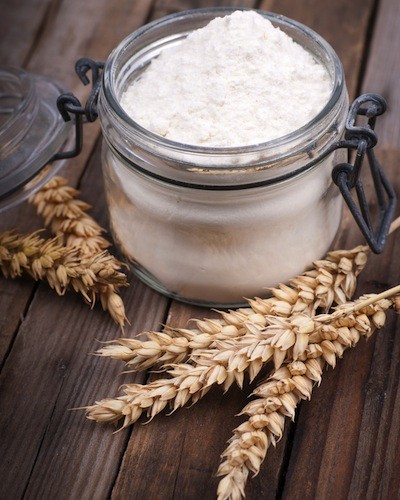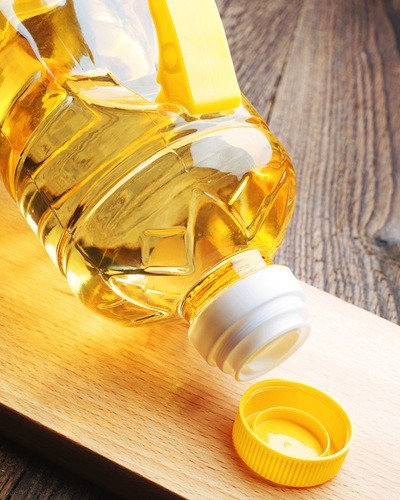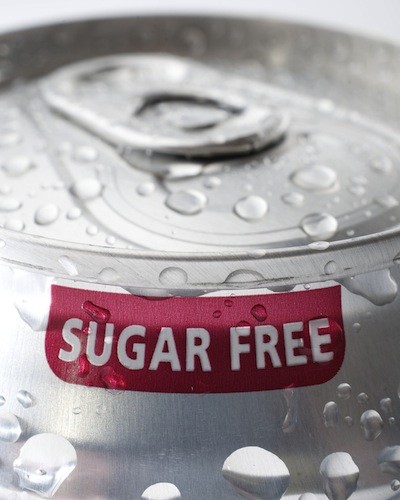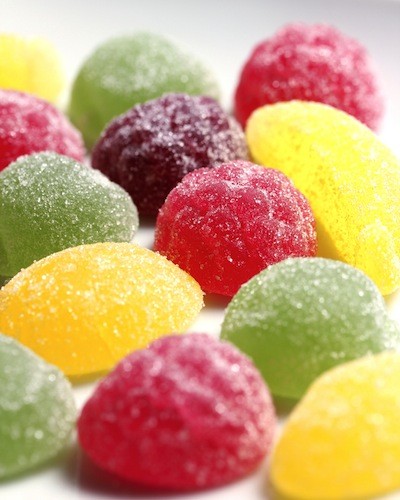Food not only affects your waistline, but it can also affect how you think, act and feel emotionally. Many foods or food additives we consume can wreak major havoc on our nervous system, resulting in moodiness, fatigue, anxiety and even depression. The tiniest hidden traces of these mood-wrecking foods can leave you feeling down. Know what foods to look for to ensure your mood isn’t compromised.
1.
White flour

The fact that white flour is bad for your health isn’t necessarily groundbreaking nutrition information. However, this powdery white substance also sneaks its way into foods like soups and salad dressing by acting as a thickening agent. Because of its empty calories and high blood glucose content, even a small amount can cause mood swings and hunger pains.
Rule of thumb: If it’s white, don’t take a single bite. Instead, choose 100% whole grains or gluten-free options.
2.
FD & C Red No. 40

This food dye is one of the most commonly used dyes. Its sole purpose is to make food colorful and enhance the flavor, and it's hidden in everything from frosting and chips to sports drinks and fruit snacks. However, don’t let the bright color or tastes fool you: this additive is linked to hypersensitivity and ADHD among children and adults.
Rule of thumb: Don’t be misled, stay away from RED. Ensure even your favorite organic snacks are free and clear of this harmful dye.
3.
Hydrogenated oils

Hydrogenated oils are processed oils that are used by manufacturers to extend the shelf life of products. Hydrogenated oils are also responsible for creating trans fat in foods. Trans fat is shown to increase cholesterol levels and increase weight since your body has to work extra hard to digest it. It can also cause brain fog and severe moodiness.
Rule of thumb: The shorter the expiration date, the better for your weight. (And your happiness!) Opt for products that expire within a week or two. And always choose healthy oils like organic coconut oil or organic extra virgin olive oil.
4.
Aspartame

Aspartame is an ingredient used to sweeten “sugar-free” products on the market. While you might think you're doing yourself a favor by skipping the sugar, you might want to think twice. Aspartame is a chemical that has been shown to cause headaches, digestive issues and even seizures.
Rule of thumb: If it says sugar free, it most likely means hazardous chemical concoction. Instead, sweeten foods with 100% raw cane sugar, coconut sugar or raw honey.
5.
FD & C Yellow No. 5

Our bodies aren't meant to process chemicals, and that certainly applies to this one. Yellow no. 5 is a food dye most commonly found in cookies, soft drinks and even gum. If a product contains high quantities of yellow food dye, it can give food or drinks a yellowish glow. This food dye has been linked to asthma, allergic reactions and mood disorders.
Rule of thumb: If it contains yellow, say hell NO! Always take caution before eating foods or candies that are extremely colorful, as they're more likely to contain food dyes.
6.
Monosodium glutamate

Monosodium glutamate, also known as MSG, is commonly used in packaged foods to enhance flavor and extend shelf life. Many products like chips, soups and frozen meals contain MSG. Consuming even small amounts of this ingredient can lead to light-headedness, nausea, feelings of anxiety and weakness.
Rule of thumb: If it contains MSG, it’s no good to me! (or my body!) But be careful; the FDA(Food & Drug Administration) doesn’t require MSG to be listed as an ingredient. Always choose products that are organic or labeled “MSG Free.”
7.
Sugar
Sugar is hidden in almost every processed and packaged food, including chips, sauces, fruit juices, cereals and energy bars. Sugar is often disguised by one of its many names: dextrose, fructose, corn syrup, lactose and sucrose. Eating foods that are high in sugar can contribute to health issues such as diabetes, thyroid issues, depression and weight gain.
Rule of thumb: When sugar is a main ingredient, opt for a sweet fruit as a supplement. If you really have a fix for something sweet, opt for a healthier version of your favorite treat.
1.
White flour

The fact that white flour is bad for your health isn’t necessarily groundbreaking nutrition information. However, this powdery white substance also sneaks its way into foods like soups and salad dressing by acting as a thickening agent. Because of its empty calories and high blood glucose content, even a small amount can cause mood swings and hunger pains.
Rule of thumb: If it’s white, don’t take a single bite. Instead, choose 100% whole grains or gluten-free options.
2.
FD & C Red No. 40

This food dye is one of the most commonly used dyes. Its sole purpose is to make food colorful and enhance the flavor, and it's hidden in everything from frosting and chips to sports drinks and fruit snacks. However, don’t let the bright color or tastes fool you: this additive is linked to hypersensitivity and ADHD among children and adults.
Rule of thumb: Don’t be misled, stay away from RED. Ensure even your favorite organic snacks are free and clear of this harmful dye.
3.
Hydrogenated oils

Hydrogenated oils are processed oils that are used by manufacturers to extend the shelf life of products. Hydrogenated oils are also responsible for creating trans fat in foods. Trans fat is shown to increase cholesterol levels and increase weight since your body has to work extra hard to digest it. It can also cause brain fog and severe moodiness.
Rule of thumb: The shorter the expiration date, the better for your weight. (And your happiness!) Opt for products that expire within a week or two. And always choose healthy oils like organic coconut oil or organic extra virgin olive oil.
4.
Aspartame

Aspartame is an ingredient used to sweeten “sugar-free” products on the market. While you might think you're doing yourself a favor by skipping the sugar, you might want to think twice. Aspartame is a chemical that has been shown to cause headaches, digestive issues and even seizures.
Rule of thumb: If it says sugar free, it most likely means hazardous chemical concoction. Instead, sweeten foods with 100% raw cane sugar, coconut sugar or raw honey.
5.
FD & C Yellow No. 5

Our bodies aren't meant to process chemicals, and that certainly applies to this one. Yellow no. 5 is a food dye most commonly found in cookies, soft drinks and even gum. If a product contains high quantities of yellow food dye, it can give food or drinks a yellowish glow. This food dye has been linked to asthma, allergic reactions and mood disorders.
Rule of thumb: If it contains yellow, say hell NO! Always take caution before eating foods or candies that are extremely colorful, as they're more likely to contain food dyes.
6.
Monosodium glutamate

Monosodium glutamate, also known as MSG, is commonly used in packaged foods to enhance flavor and extend shelf life. Many products like chips, soups and frozen meals contain MSG. Consuming even small amounts of this ingredient can lead to light-headedness, nausea, feelings of anxiety and weakness.
Rule of thumb: If it contains MSG, it’s no good to me! (or my body!) But be careful; the FDA(Food & Drug Administration) doesn’t require MSG to be listed as an ingredient. Always choose products that are organic or labeled “MSG Free.”
7.
Sugar
Sugar is hidden in almost every processed and packaged food, including chips, sauces, fruit juices, cereals and energy bars. Sugar is often disguised by one of its many names: dextrose, fructose, corn syrup, lactose and sucrose. Eating foods that are high in sugar can contribute to health issues such as diabetes, thyroid issues, depression and weight gain.
Rule of thumb: When sugar is a main ingredient, opt for a sweet fruit as a supplement. If you really have a fix for something sweet, opt for a healthier version of your favorite treat.

